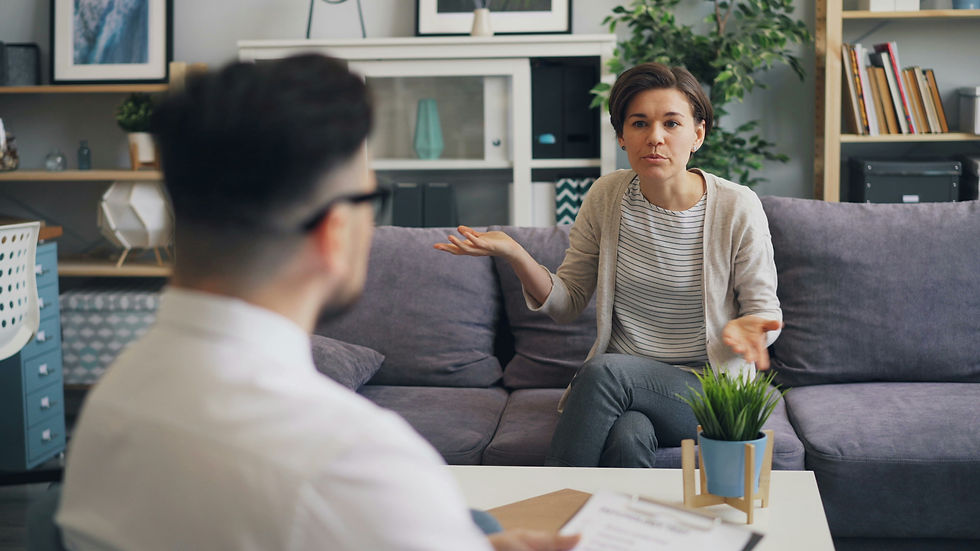Truth and Reconciliation Healing: 5 things we can learn from The Indigenous People of Canada
- Sam Stone

- Sep 30, 2023
- 4 min read
I gratefully acknowledge that I live and work on the unceded traditional and ancestral land of the Syilx and Métis People, and who are among the hundreds of Indigenous Nations across BC, each with their own unique traditions, history and culture.

As a new settler on the ancestral territory of the Syilx people in the Okanagan, it has been devastating to learn about the history of Canada, and the continuing pain and generational trauma that ripples throughout Indigenous people today, leaving its impact upon everyone.
As settlers, we must continually educate ourselves and stay active and vigilant for the advancement of decolonization. This means, keeping humility, unlearning some things instilled in us from the dominant culture, and learning more about Indigenous practices, which supports sustainable and community-based solutions to problems (Grier, 2021).
Here are some findings of how Indigenous People are doing their healing work, what has been helpful and what has been unhelpful.
Telling your story is a strategy adopted in most counselling modalities, however this is also a traditional method of healing for Indigenous individuals and communities. It takes a lot of courage to be able to get to this point, especially in smaller communities where anonymity is less likely.
In addition, the more alone one feels in their pain, the less likely they will openly share, and the less likely public discussion will be generated, and the less likely acknowledgement and understanding will be expressed. Therefore, safe opportunities and avenues of support must be available for people to express their experiences.
People have been finding individual sessions from helpers, within people’s homes, or out on walks or over the phone are helpful. In addition, healing circles are led by experienced members and involve weekly themes and activities (Fletcher & Denham, 2008).
Lack of action. It is desirable to transform the pain into action, using the pain and desire for change as fuel to work towards a better life. A case study finds that the “stop-start” in progress; that is, the sense that there is some progress followed by inaction, is frustrating within Indigenous communities, and there is a need for more consistent flow of active healing work (Fletcher & Denham, 2008).
Healing is not regarded as having a particular end-point. Rather, it is a lifelong process of continuous recognition and desire to move forward with change. As although a person may be healed from certain things, “there are always new things that are coming to hurt”.
“Healing is conceptualized as an active process, a journey or movement along a path. The goal of moving toward healing involves the removal of pain or establishing and maintaining a balance in one’s life”.
Additionally, healing is also a question of organizing life experiences into a coherent and functional sequence; of getting things into “their proper places … Like a puzzle”.
The Inuit community described the consequences of traumatic experiences as a fragmentation of self, of relationships, of emotions and of spirit and that it is possible to unite all of these things again, which indicates healing.
This description of the healing of trauma aligns with other concepts, such as polyvagal theory and CBT theory. Helpers here work to uncover the pain a person may be carrying, and burying. Then they can help them identify the pain and confront it, and therefore process it, resulting in the integration of the whole self (Fletcher and Denham, 2008).
But this is not the only mode of healing, as interestingly, talking about traumatic or painful experiences does not always mean that healing will happen. What is also healing, are ordinary conversations, when two people feel comfortable together. Even silence between two individuals who understand each other can have a powerful healing effect (Fletcher and Denham, 2008).
As a collective, meeting to recognize the history of abuse and organizing and mobilizing around healing does have a healing effect. Individual healing is less likely without the community support. Although individuals must take responsibility to engage in the healing process, it must be socially acknowledged and supported by the community (Fletcher and Denham, 2008).
This should challenge the validity of the dominant culture’s individualistic stance and the internalized shame that deters people from asking for help. The covert and overt shaming that happens when people do ask for help, is sometimes passed off as attention-seeking, or weak.
The difference in Indigenous communities is that community members come together to organize and shape the healing experience, as a collectivist culture. The very basis of healing depends on the awareness of the self in relation to others, awareness over the decisions you make, and awareness of and ability to empathize with others. Being surrounded by a community who cares for one another’s wellbeing can support the individual as they carry a lot of their own personal pain (Fletcher and Denham, 2008).
In sum
This is by no means an exhaustive list of the elements of healing by the Indigenous Peoples of Canada, but are just some findings and experiences. This is still the beginning of my commitment to educate myself and act for the advancement of decolonization on this land.
References
Fletcher, C. & Denham, A. (2008). Moving towards healing: A Nunavut case study. In: Waldram, J. B. Aboriginal healing in Canada: Studies in therapeutic meaning and practice. (Eds). Ottawa: Aboriginal Healing Foundation.
Grier, M. (2021, June 14). Are all “allies” really equal? Tips on being an active Indigenous Ally. University of Calgary. https://news.ucalgary.ca/news/are-all-allies-really-equal-tips-being-active-indigenous-ally.
Racine, N. McArther, B. A. (2021, Sept 28). What you can do as a settler Canadian on National Truth and Reconciliation Day. University of Calgary. https://ucalgary.ca/news/what-you-can-do-settler-canadian-national-truth-and-reconciliation-day



Commenti